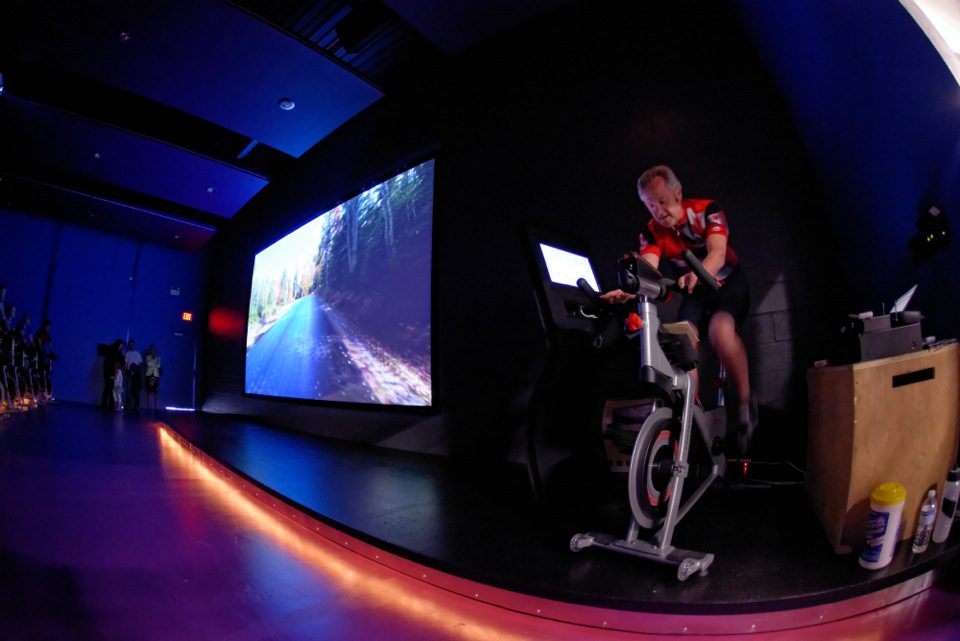Ride efficiently: Heart rate and power

Heart rate and power are two terms that get used often in triathlon training. Thanks to a number of technology options out there now, triathletes and cyclists can become more efficient riders by paying attention to these numbers. Whether it’s hill climbing, sprint work or low threshold training, riding with data helps build stronger triathletes.
Many indoor cycling studios are beginning to offer classes that use power meters. TMC spoke to the Andrew Thistlethwaite, the owner of World Tour Indoor Cycling in Burlington, Ontario.
Thistlethwaite explained how studios that use power and heart rate data differ from conventional “spinning”, which gained popularity around 20 years ago. Thistlethwaite brought Stages crank-based power meter to WTIC so riders could learn how to ride more efficiently.
He stresses the importance of performing an FTP test so riders can get their functional heart rate and power numbers. WTIC gives riders the chance to test their FTP before taking indoor cycling classes at the studio.
“The FTP test delivers results in the form of wattage and heart rate numbers. It gives us a snapshot of a rider’s fitness level. We use the rider’s data to develop five heart rate training zones and establish comfortable wattage that they can sustain and max wattage they should aim for in sprints. Knowing these numbers, wearing a heart rate monitor and using a power meter, we’re able to train efficiently at every RPM, intensity level and ride duration,” he says. Riding efficiency refers to staying within a heart rate zone and at a wattage that is sustainable for the duration of the ride.
A combination of power and heart rate training, especially during indoor cycling sessions, helps triathletes become stronger riders outdoors. “The information you learn about your riding efficiency can be transferred over on race day,” Thistlethwaite explains. “You can plan your race so that you don’t fatigue too early, because you’ll know what wattage is sustainable and what heart rate zone is comfortable. Monitoring those two numbers is what’s going to get you to T2 or the finish line as efficiently as possible. Average speed is irrelevant out there, as so many factors get in the way.”
In the video above, Thistlethwaite leads a class that teaches riding efficiency at different RPMs. Riders were instructed to maintain their wattage through a ride that cycles through three 10 minute blocks of 70 – 75 RPM, 80 – 85 RPM and finally 90 – 95 RPM. In doing so, their heart rate zones projected onto individual screens should have formed a horizontal line develop across the duration of the ride, indicating steady heart rates in a low zone. The goal of the ride was to stay efficient until a final sprint in the last five minutes. Therefore, heart rates and wattage should not have deviated much despite the change in RPM. The final sprint allowed cyclists to hit the big watts they were capable of without much difficulty. Riding efficiently for the majority of the ride meant that they had lots in the tank for an all-out finish.
This type of ride reflects a real triathlon bike course with hilly terrain that demands change in RPM to maintain comfortable wattage.
In these videos below, two WTIC riders talk about how riding with heart rate and power numbers has helped their training. Bill Glennie is a cyclist who can now ride faster and further outdoors since adjusting to this method of training. Stephanie Rayner is a former competitive swimmer who used WTIC’s methods to lose weight and gain back her high level of fitness.
